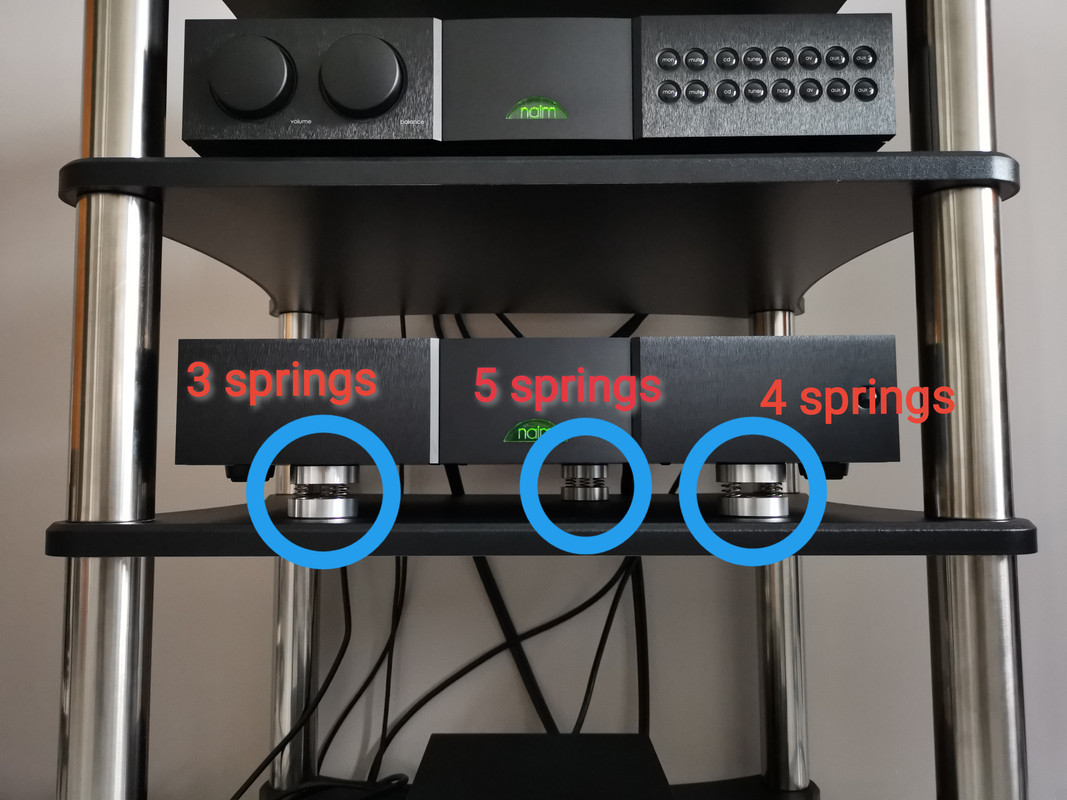Folks, an update. I’ll cut to the chase.
Please put some effort in the set up of the Nobsounds as they have proven to be effective, only when properly set up. As mentioned earlier, no shortcuts.
I can confirm that the footers have brought an impact to the system. After getting to the optimized set up of the Nobsound on the power amp, I removed them and listened again. The bass lost definition and sounded smeared. There was bass resonance. Next, percussion sounded soft, subdued and smeared, lacking energy and sparkle.
Now, the interesting part. I reinstalled the Nobsounds but failed to achieve the previous performance. Long story short. Some footers have a larger gap while some show a smaller gap. After some adjustments it’s all glory again. Lesson learned - try to get a same compression for all footers below the component.
The diagram below shows the 3 footers under the amp. As the load distribution of the amp is unequal(transformer is located on the right), all footers have different number of springs.

Notice the footer at the rear is not at the centre but moved slightly to the right. The placement of this footer was painstakingly adjusted several times to ensure an even compression for all 3 footers.
The diagram below shows the transformer on the right which contributed to the heavier weight where more springs are required to compensate.




